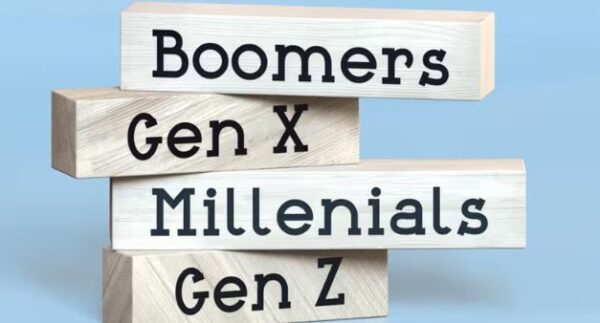Lifestyle
Gen X, Y, Z: How generations get their names

From Baby Boomers to Gen Z, these labels help define groups of people born in certain time periods and give each generation a unique identity.
But what do they mean, and how do these names come about?
What is a generation?
A “generation” usually refers to a group of people born around the same time, within a 15-20 year span. These people share similar experiences, culture, and societal trends. The events and changes that happen in the world while they are growing up shape their views, habits, and values. For example, someone who grew up during the rise of the internet might view the world differently from someone who grew up before it existed.
The Baby Boomers (1946-1964)
The name “Baby Boomers” comes from the “baby boom” that happened after World War II. When soldiers returned home, many families started having more children, leading to a massive increase in births.
These babies were later called “boomers” because of this large “boom” in population. The Baby Boomer generation is known for shaping culture, politics, and society, especially during the 1960s and 1970s. Many became part of movements like civil rights, feminism, and environmentalism.
Generation X (1965-1980)
Generation X, or “Gen X,” followed the Baby Boomers. The name might not sound as exciting, but it has a deeper meaning. The “X” represents an unknown or undefined factor. This label was given because this generation seemed to resist being boxed into any specific category. Growing up in a time of change, Gen X experienced the rise of new technologies like computers, cable TV, and the Internet. They are known for being independent, sceptical of authority, and adaptable to different changes in society.
Millennials (1981-1996)
The term “Millennials” was coined because this generation was coming of age around the year 2000, or the new millennium. They were also called “Generation Y” at first, following “X,” but the “Millennials” label stuck because it highlighted their experiences during the digital revolution. Growing up with technology, social media, and the internet as a part of their everyday lives, Millennials are seen as tech-savvy, socially conscious, and value experiences over material possessions.
Generation Z (1997-2012)
After Millennials, we have “Generation Z” or “Gen Z.” Like “Generation Y,” their name comes from following the alphabet. Gen Z is the first generation to be born into a fully digital world. They grew up with smartphones, social media, and access to information at their fingertips. Because of this, they are seen as highly connected, open-minded, and quick to adapt to new trends. They also tend to be more aware of social and global issues, like climate change, mental health, and equality.
What comes next? Generation Alpha (2013-present)
As we continue through the alphabet, the generation following Gen Z is called “Generation Alpha.” The name “Alpha” represents a new beginning, much like how the first letter of the Greek alphabet signals the start of something new. These kids are being raised in a world that is more digital than ever before, with smart devices, artificial intelligence, and a strong focus on sustainability and social change.
How are these names chosen?
There isn’t a single rule or person who picks these names. Most times, social scientists, marketers, and writers observe trends and come up with a name that best captures the generation’s essence. Sometimes the name sticks quickly, like “Millennials,” and other times, it may change over time. The names are meant to reflect the experiences, behaviours, and outlook of each group.
What do these names tell us?
Generational names are more than just labels; they tell a story of how the world changes over time. Each name reflects the events, culture, and values that shape that particular generation. They give us an easy way to talk about the differences and similarities among groups of people born at different times. Knowing the background of these names helps us understand how the world has evolved and how each generation contributes to society.








